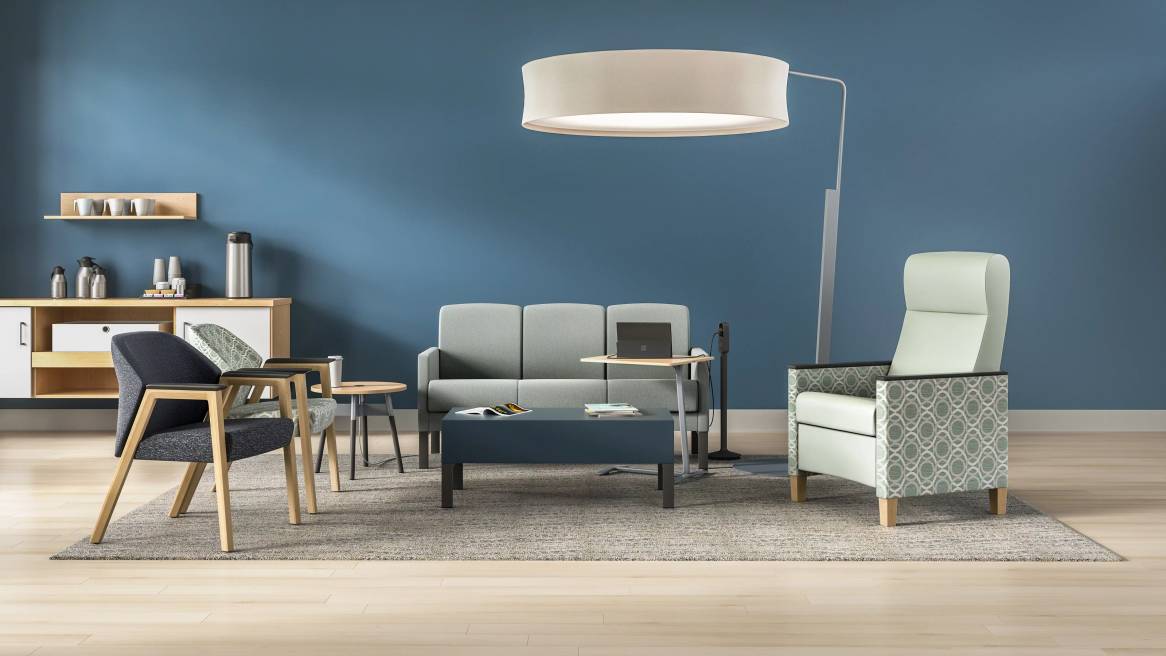Higher Expectations, Less Patience
How New Attitudes About Waiting Impact Healthcare Design
Only about 10%. That’s the amount of time a patient typically spends with the care provider during a medical appointment. The other 90% of the time patients are mostly waiting to check in, waiting for their exam, waiting for tests, waiting for results, waiting for a consultation regarding the next step in their care.
Waiting is an inescapable part of healthcare. And every moment that patients and their families spend waiting or transitioning to the next step in the process can have a huge impact on their perceptions of quality and their overall impression about the care they receive.
Steelcase Health research reinforces that it’s impossible to separate the act of care from where it occurs, including and especially the areas where patients wait. In fact, in one survey, 63% of patients said the most stressful part of visiting their doctor is the time they spend waiting in the lobby.
Though often overlooked, waiting and transition spaces are taking on new importance in today’s competitive healthcare marketplace where every element of the patient’s experience matters. Thanks to the surge of technology in everyday life, we’ve come to expect receiving something very soon after we’ve decided we want or need it, whether that’s an Uber pickup, an Amazon delivery or an answer from Google or Alexa. When it comes to service, “ASAP” is often no longer good enough; we want responsiveness geared to us and our timeframes. We’ve also become comparison shoppers, researching our choices and comparing their ratings. Because of these pervasive trends, patients and their families have become savvier consumers with escalating expectations. They’re shopping around for care and reporting their experiences online – the good, the meh and the bad – especially the bad. These new expectations and behaviors are challenging healthcare to change.
“A real question for healthcare organizations is how waiting can be made a valuable part of the healthcare experience, not just a necessary evil.”
Seth StarnerSteelcase Health Researcher
At the same time, healthcare organizations are facing substantial pressures as they struggle to recover from COVID-related revenue drops, which can range from 20-30% according to several recent studies. With non-essential healthcare appointments on hold for months, COVID generated a massive shift to virtual care. There are strong signals that virtual care is here to stay, a valued solution for a significant number of care needs. At the same time, according to a recent McKinsey study, many patients are also returning to in-person care, either because of personal preference or the nature of their ailment or need. Regardless, the time-related convenience of virtual visits has had impact on expectations regarding in-person care. Patients have less patience than ever for waiting, considering their own time – not just the doctor’s – a valuable commodity. The same is true for the family members or others who often accompany them.
“A real question for healthcare organizations is how waiting can be made a valuable part of the health care experience, not just a necessary evil,” says Steelcase Health Researcher Seth Starner. “From the patient’s perspective, the waiting experience is part of how I determine the quality of care I receive. Yes, it’s time-related – the longer I wait, the less positive my view. But a big component of the evaluation is also spatial. Do the waiting and transition spaces help me feel better about the 10% of my appointment time that’s active engagement with my care provider? Is the space clean? Does it feel safe? Is it welcoming? Is it comfortable? Is it a functional place where I have choices and can be productive while I wait?”
Time to Revisit Waiting
The right settings can create welcoming waiting experiences that set the stage for positive interactions with care providers. As recovery from the massive disruption of COVID continues, future-focused healthcare organizations are seizing this opportunity to completely rethink their waiting spaces and explore new paradigms. As Starner puts it, “Was it ever a good idea just to have rows and rows of connected seating in waiting spaces? And is the best solution now just to run tape across some of those chairs and put in more sanitizer stations?”
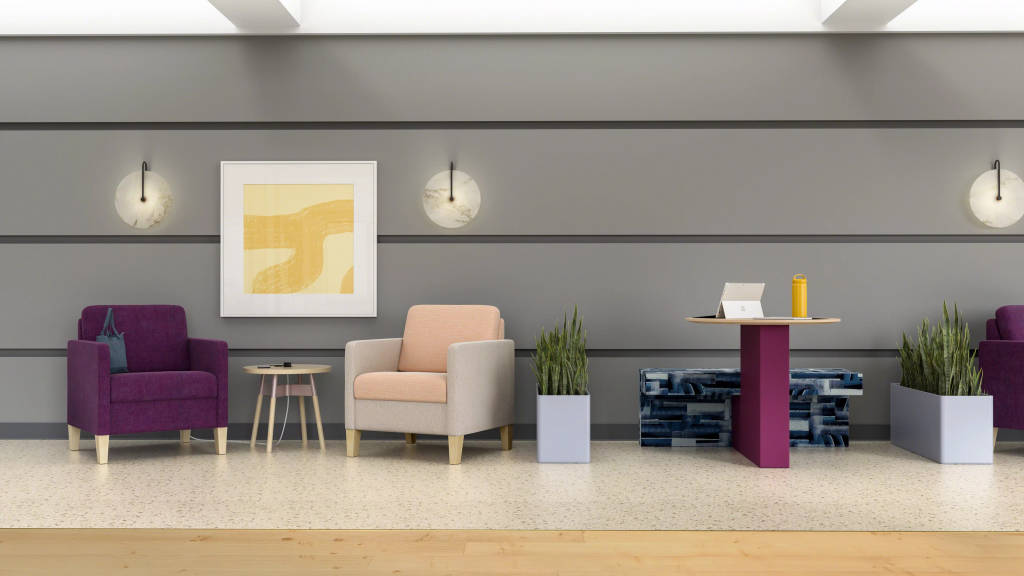
The good news is there are many ways to create more efficient, adaptable and patient-pleasing waiting spaces. What’s key, says Starner, is to focus on waiting and transition spaces as experiences to be designed not just operational necessities. Here are six design principles that can help steer you toward creating an effective solution.
Design for productive waiting
- Support use of personal devices with easy access to power and Wi-Fi/cell service throughout the space
- Provide posture options (e.g., upright sitting, lounging, standing) and a variety of furniture arrangements that support ergonomics
- Provide settings with hosting amenities, including a space for items such as bags, personal devices or beverages/food
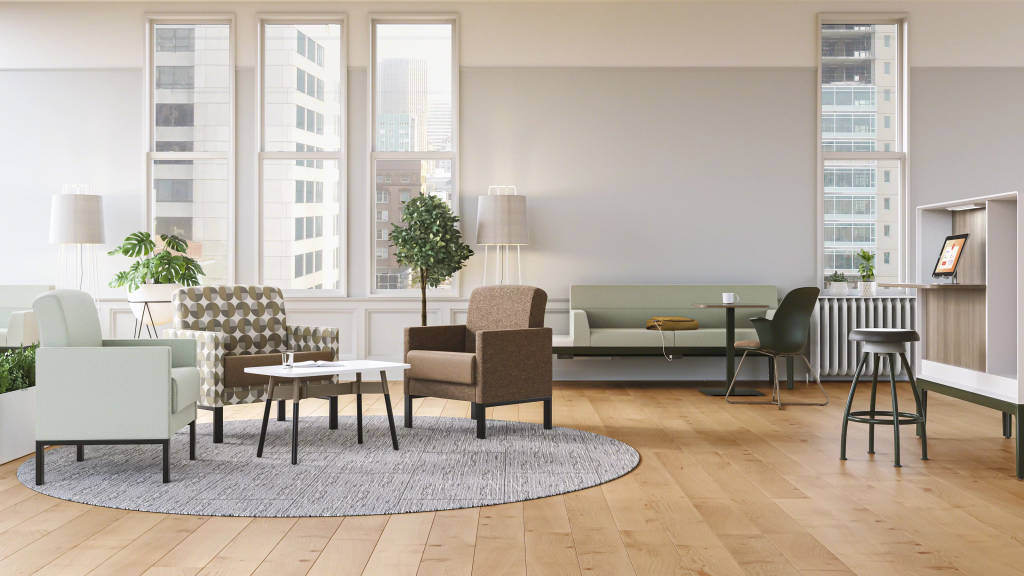
Design for comfort
- Provide spaces that accommodate different preferences for levels of noise and stimuli, balancing separation and togetherness (density) while creating zones for personal retreat
- Incorporate soothing materials, textures, colors, lighting, artwork and views (natural or via technology)
- Provide inclusive options suitable for people with various physical needs
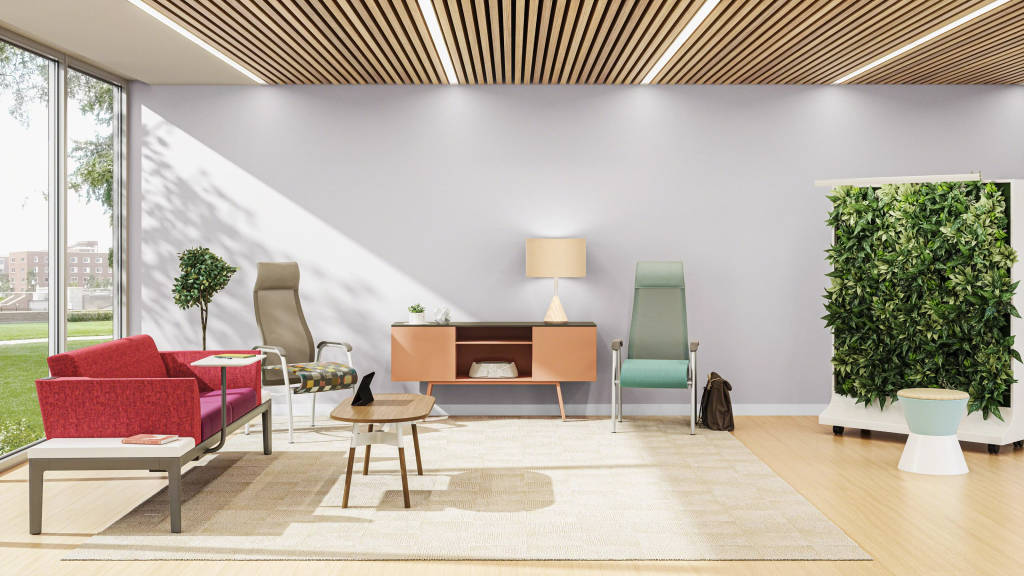
Be flexible
- Provide flexible furniture options that can be easily changed by the patient or facilities staff –e.g., moveable, stackable, reconfigurable, etc.
- Incorporate flexible, accessible power to support personal devices
- Provide settings that allow for different activities (e.g., booth seating where people can eat, play a game, read a book, do work, etc.)
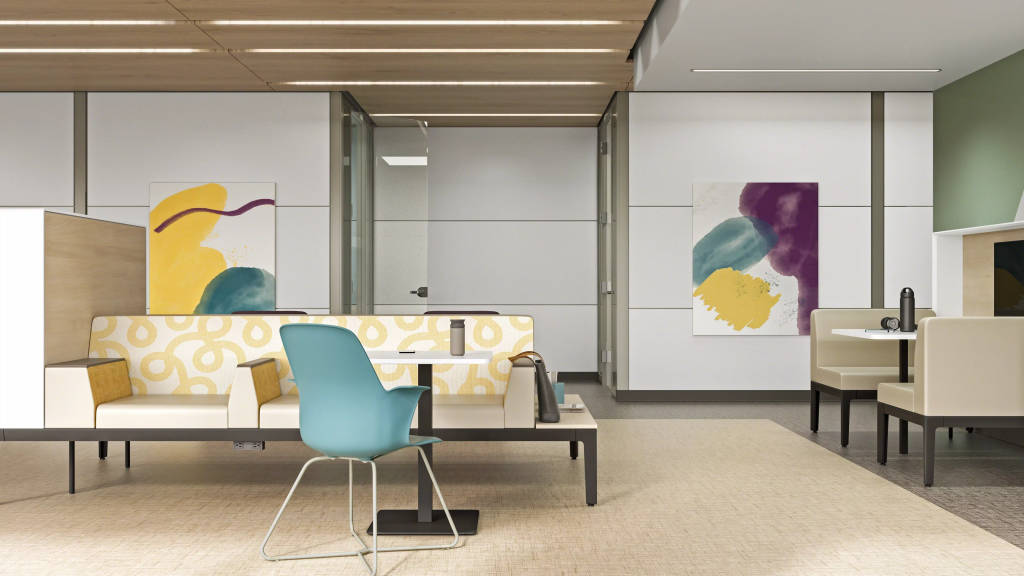
MAKE INFORMATION VISIBLE
- Ensure clear sightlines to clinicians, staff, queue boards and other important displays
- Provide access to informational content — analog or digital (e.g., brochures, posters, video loops, etc.)
- Provide options that create egalitarian access to staff
- Display easy-to-recognize and understandable visual cues that help patients navigate the place and process (signage, landmarks, furniture, etc.)
INTEGRATE PHYSICAL + DIGITAL
- Connect the physical experience and virtual experience with consistent branding (colors, artwork, logo displays, backgrounds, etc.) to establish professionalism and help people feel at ease in each setting of care
- Support different types of check-in/patient flows
- Ensure access to technology plus clear instructions that support Wi-Fi/cellular notifications in all settings
Demonstrate safety
- Ensure visibility and access to sanitation stations
- Post clear signage to inform traffic flows and safety protocols
- Select durable materials that wear well with aggressive cleaning
- Use design elements to organically encourage distancing and other safety protocols
Tap Into these Helpful Ideas
With a new era for healthcare emerging, there’s never been a better time to improve past norms. Take a next step with these planning ideas. You’ll find a variety of ideas and layouts, all demonstrating ways to create spaces that support more positive waiting and transition experiences as a pathway toward achieving the aim of significantly improved patient satisfaction.

